For a company that’s made a lot of money by selling the concept of simplicity, Apple’s holiday lineup features an almost overwhelming number of gadgets. Here’s a look at the main product lines, along with some buying advice for each category.
Computers
MacBook Air Laptops ($899+)
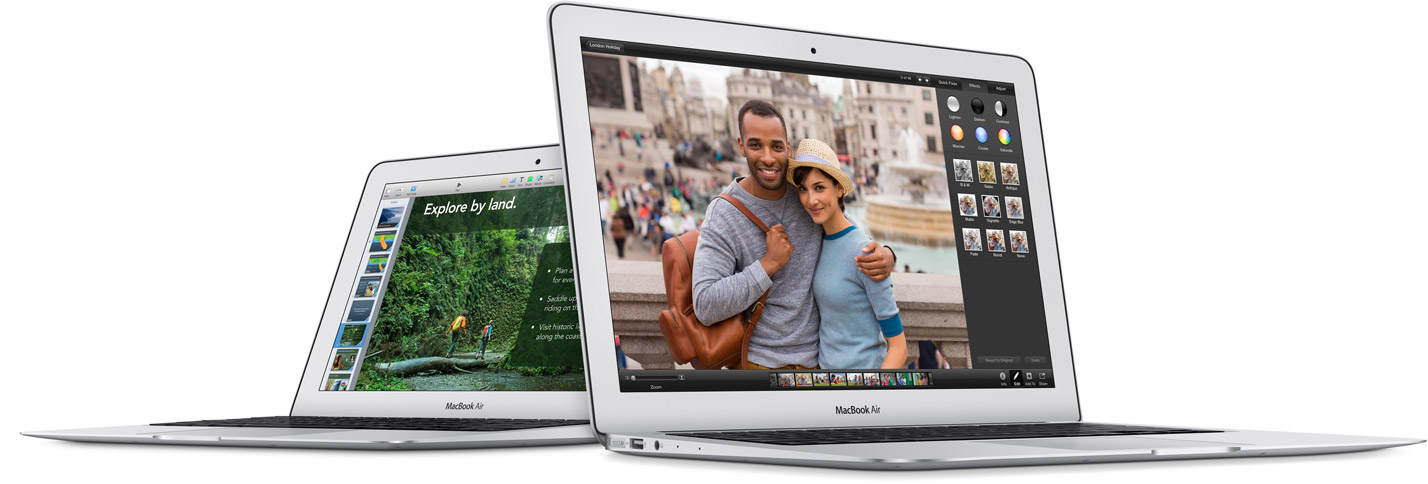
When it comes to Apple’s portable computer lineup, you’ve got the less expensive, more portable MacBook Air line or the more expensive, more powerful MacBook Pro line.
There are two base models to choose from in the MacBook Air line: an 11-incher starting at $899 and a 13-incher starting at $999. They were last updated in April of 2014.
The 11-inch model is — surprise — the more portable of the two, weighing in around 2.4 pounds. However, for $100 extra, the 13-inch model gives you a higher-resolution screen, three additional hours of battery life (9 for the 11-inch, 12 for the 13-inch), and an SD memory card slot.
Product Page [Apple.com]
MacBook Pro Laptops ($1299+)

The more potent of Apple’s portables, the MacBook Pro line consists of 13- and 15-inch models with super high-resolution “Retina” screens and a top-of-the-line model with a starting price (before custom configuration) of $2499. The line was last updated in late July of 2014.
They’re still plenty portable: Each model measures less than three quarters of an inch thick, with the 13-incher weighing just shy of 3.5 pounds and the 15-incher weighing just shy of 4.5 pounds.
Making the leap from the base 13-inch model to the base 15-inch model commands a $700 price premium, but nets you a better processor, double the RAM, double the storage, and higher-resolution screen with a better graphics chip. You lose an hour of battery life with the 15-inch model (eight hours versus nine hours for the 13-incher), and there are a couple upgraded 13-inch models to choose from ($1499 and $1799) before you get to the first 15-inch model.
Note that there’s also an aging non-Retina 13-inch MacBook Pro that’s still for sale with a $1099 starting price. It’s not touted on Apple’s main MacBook Pro page, however, and hasn’t been updated for quite a while. It’s been rumored that it’s being killed off entirely. You can do better with $1099.
Product Page [Apple.com]
iMac All-in-Ones ($1099+)

Apple’s all-in-one desktop line comes in 21.5-inch models starting at $1099 and 27-inch models starting at $1799. They were last updated in late September of 2013, with the entry-level model added in mid-June of 2014. The Retina 5K model was added in mid-October 2014 with a $2499 starting price.
The entry-level $1099 jobber tends to steer you into taking a good, hard look at the next step up; a $1299 21.5-inch model which, for $200, gets you a much better processor (2.7GHz quad-core versus a 1.4GHz dual-core), double the storage space, higher-end RAM, and a better graphics chip.
Stepping up to the baseline 27-inch model (starts at $1799), gets you a super high-resolution screen (2560 x 1440), a better processor and a better graphics chip. You’re paying mostly for the enormous 27-inch screen. It’s a really nice screen — I use one for work on occasion — but the rest of the system’s innards aren’t mind-blowing by any means. You can do some custom upgrades to increase the mind-blowingness, of course.
Find another $700 in your couch cushions, and you can step up to the all-new Retina iMac, which starts at $2499 and sports an insanely high-resolution screen (5120 x 2880). Apple blew right past “4K” and is calling this “5K” instead. Aside from the screen technology, this model starts out with a quad-core Intel processor, a faster graphics chip and a faster one-terabyte hybrid (solid-state + standard storage) hard drive.
Product Page (iMac) | Product Page (Retina 5K iMac) [Apple.com]
Mac Mini ($499+)

The diminutive Mac Mini desktop is still kicking, with a $499 starting price (d0wn from $599) and the continued understanding that you’ll need to bring your own monitor, keyboard and mouse. There’s a $699 model that gets you almost double the processing speed, double the storage, double the RAM and a better graphics chip. Tough choice, to be honest.
Product Page [Apple.com]
Mac Pro ($2,999+)

The Mac Pro comes in quad- and six-core configurations, starting at more than many people’s monthly mortgage payments. If you’re buying this as a gift for someone, you are incredibly generous, well-off or both. Either way: congratulations on all your success!
You should check with this person to see what he or she actually wants out of a Mac Pro. This isn’t a great “surprise” gift, in other words. At the most basic, however, an extra $1000 jumps you from four to six processing cores, and gets you more RAM and a better graphics chip.
Product Page [Apple.com]
iPhones
You have four iPhone models to choose from, running the price gamut from free with a two-year contract to $499 with a two-year contract.
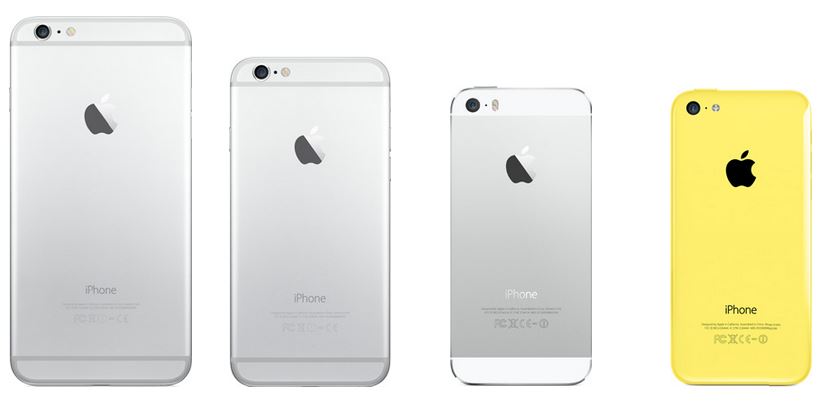
iPhone 6 Plus ($299+)
Starting on the left-hand side of the above image, the iPhone 6 Plus is Apple’s biggest phone to date. With a 5.5-inch screen, it straddles the tablet-phone chasm with a starting price of $299 with a two-year contract. Going this big (and expensive) gets you a higher-resolution screen than the iPhone 6, optical image stabilization, and longer battery life.
iPhone 6 ($199+)
Apple’s flagship phone until (probably) late 2015, the iPhone 6 attempts to summon Goldilocks with a not-too-big, not-too-small 4.7-inch screen. Apple promises up to 14 hours of 3G talk time or up to 10 hours of web surfing. Like all iPhones, an extra $100 for each trim level gets you more storage, though where previous lines doubled the storage for every $100 you spent, the 6 and 6 Plus jump you from 16 gigabytes to 64 gigabytes this time around. Another $100 pops things up to 128 gigabytes.
iPhone 5S ($99+)
Last year’s flagship model, the iPhone 5S sports a four-inch screen, fingerprint sensor, decent processor and 8-10 hours of continuous-use battery life. It’s still a fine phone, with a good camera and a 32-gigabyte storage option that costs an extra $50.
iPhone 5C (Free)
On the low end, the iPhone 5C is free with a two-year contract, comes in five colors and is available with eight gigabytes of storage. For all intents and purposes, this is a late-2012 iPhone 5 gussied up and re-released in late 2013. An extra $100 gets you more processing power and double the storage in an iPhone 5S, but if you don’t care about that and you don’t care about the fingerprint reader, this one’s a solid choice as a free phone.
Product Page [Apple.com]
See the World Await and Celebrate Apple's iPhone 6


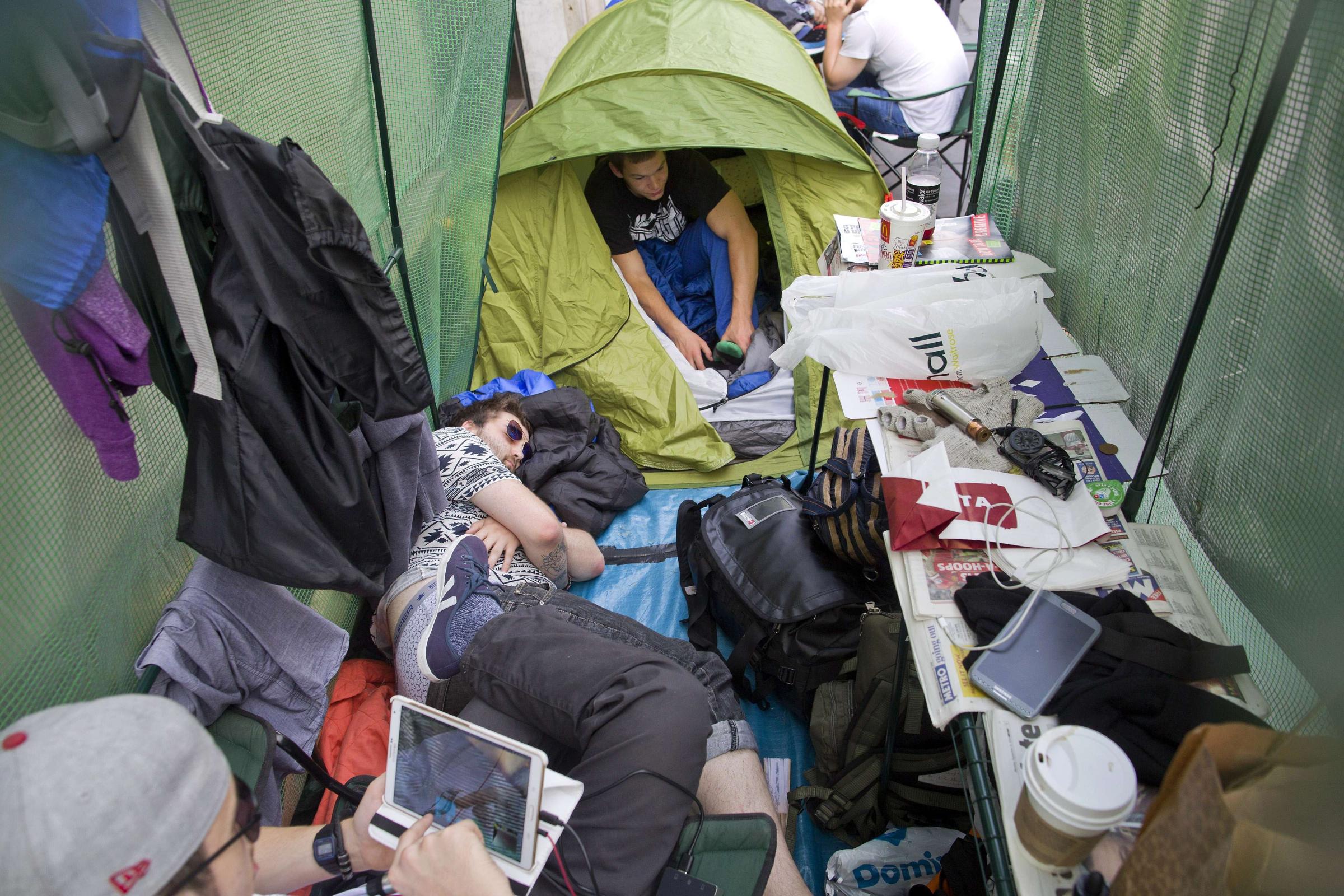


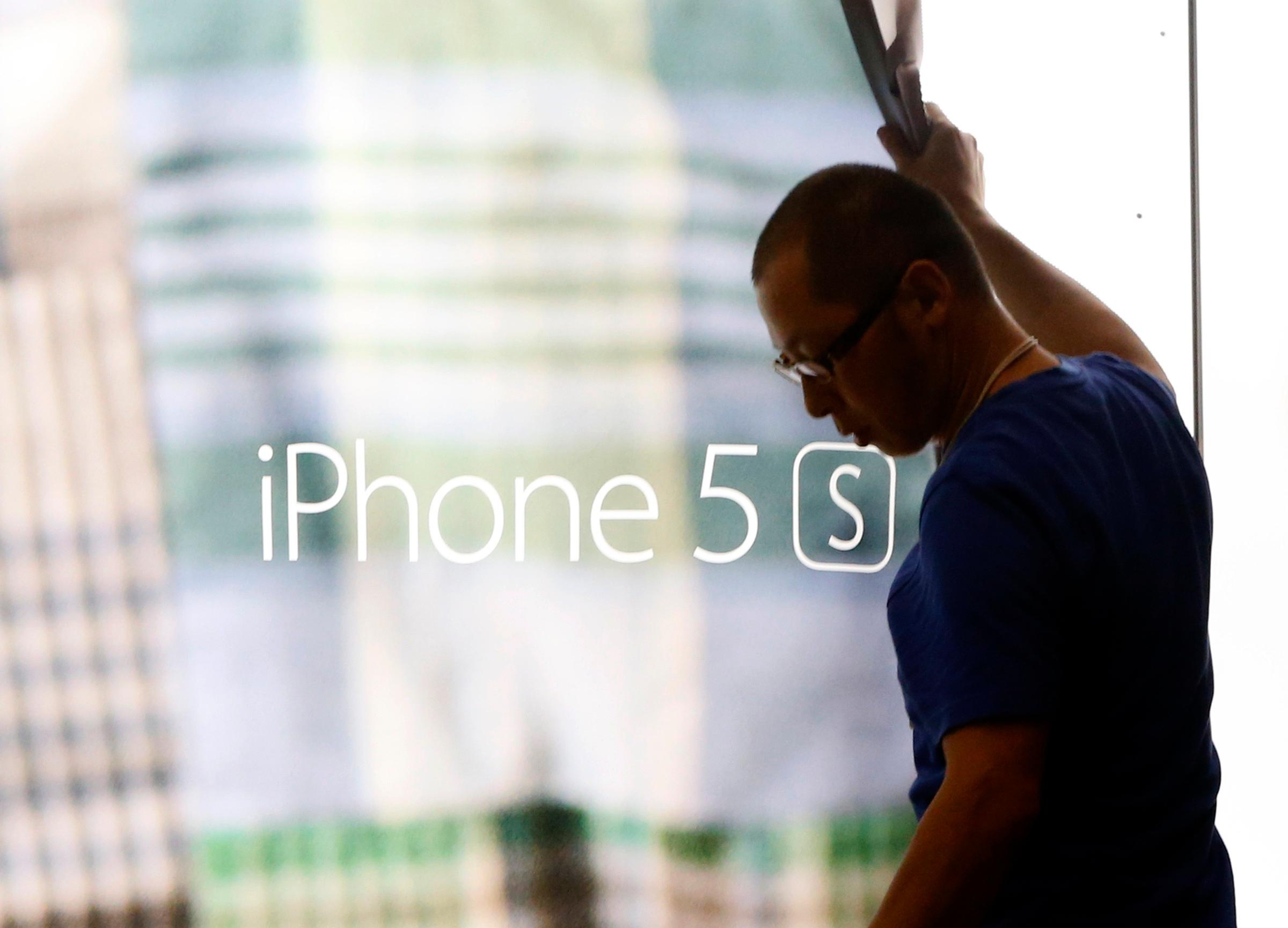




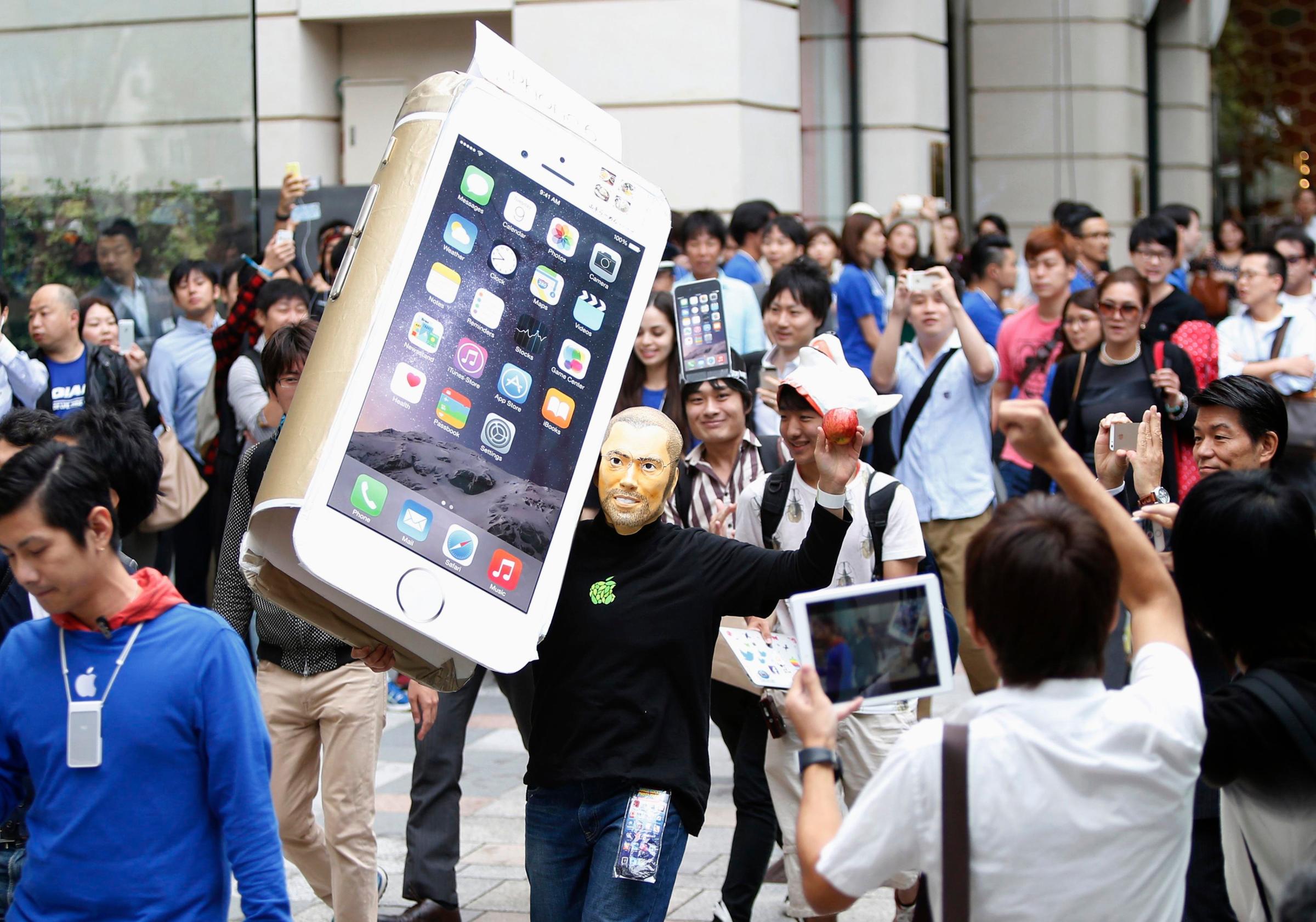


iPads
You have five iPad models to choose from. Starting prices range from $249 to $499.

iPad Air 2 ($499+)
The first version of the iPad Air was thinner than a pencil at 0.29 inches. Thanks to a new anti-reflective screen, the iPad Air 2 is thinner than that at 0.24 inches — an 18% reduction — and slightly lighter (like, 0.04 pounds lighter). There’s a souped-up iPhone 6/6 Plus processor onboard, too (the A8X), which Apple says is 40% faster than previous efforts.
Battery life remains 10 hours, as before, and the rear camera has been bumped from five to eight megapixels and can capture time-lapse and slow-motion videos. The front camera has been improved, as well, and wireless connections have been bolstered to provide faster data access.
The newest iPad Air rounds things out by adding the TouchID fingerprint sensor that debuted with the iPhone 5S, so you can unlock the tablet and log into apps and sites without typing passcodes. It’ll be available in gold, silver and gray, and there’s a new 128-gigabyte storage option available starting at $699.
iPad Air
Late November 2013’s iPad Air is sticking around, though this time with a $399 starting price (down from $499). This is still a more-than-fine full-size iPad. Spending the extra $100 on the iPad Air 2 gets you something marginally thinner and marginally lighter, with a better rear-facing camera, the fingerprint sensor and a beefed up processor. If none of these are super important to you, the iPad Air is now a comparatively good deal.
iPad Mini 3
The iPad Mini 3 is almost pound-for-pound a shrunken-down iPad Air, all the way down to the $399 starting price. You do get the fingerprint sensor, so there’s that. There’s also a 128-gigabyte option (the iPad Air tops out at 32 gigabytes). It’s smaller and lighter, too, of course (although not thinner) with a starting weight of 0.73 pounds.
iPad Mini 2
If you’re interested in a small iPad, the iPad Mini 2 looks like a really good bet, actually. It’s very similar to the iPad Mini 3, but doesn’t feature the gold color option, the 128-gigabyte storage option or the fingerprint reader. Just about everything else is there, minus $100 off the starting price.
iPad Mini
The iPad Mini is sticking around, with a starting price of $249. If ever you were to try to scrounge up an extra $50, this is the time to do it. Stepping up to the iPad Mini 2 gets you a much better screen and a much better processor. If the price was $199, it’d be a much harder decision. This thing’s already two years old, though.
Product Page [Apple.com]
iPods and Apple TV ($49+)
iPod Shuffle ($49)
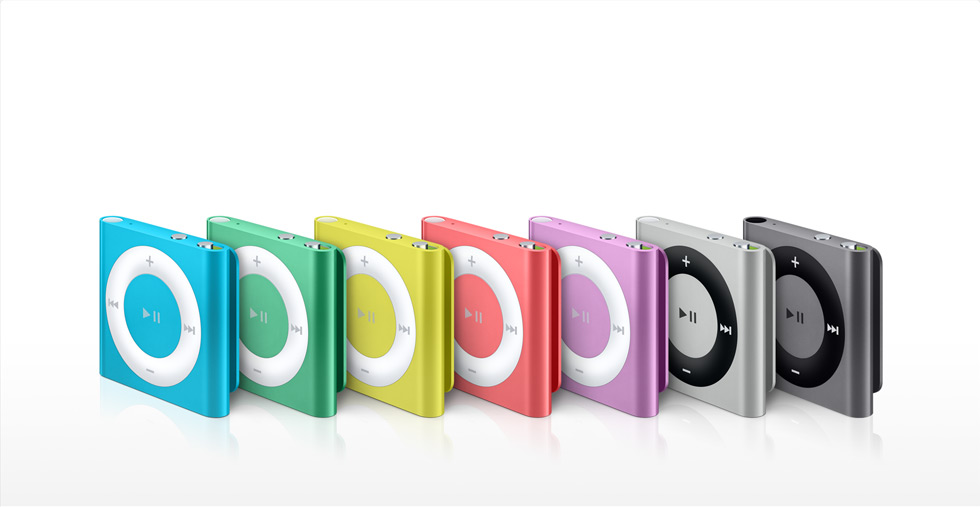
This is one of the cheapest Apple gadgets to own. A handful of sawbucks will get you a wearable music player good for 15 hours of playback that can hold hundreds of songs (up to around 500 if you really compress them, but bank on a couple hundred at least). Keep in mind that you’ll need a computer to transfer songs: This little guy has no wireless connection.
Product Page [Apple.com]
iPod Nano ($149)

The iPod Nano is a good option if you’re looking for a pocketable gadget that can be used for working out, watching video, looking at photos and listening to music. Like the iPod Shuffle, you’ll need to use a computer to load stuff onto it, but it does feature a Bluetooth connection you can use to sync it to your car’s audio system or wireless headphones. And there’s Nike+ integration if you want to track your workouts.
Product Page [Apple.com]
iPod Touch ($199+)
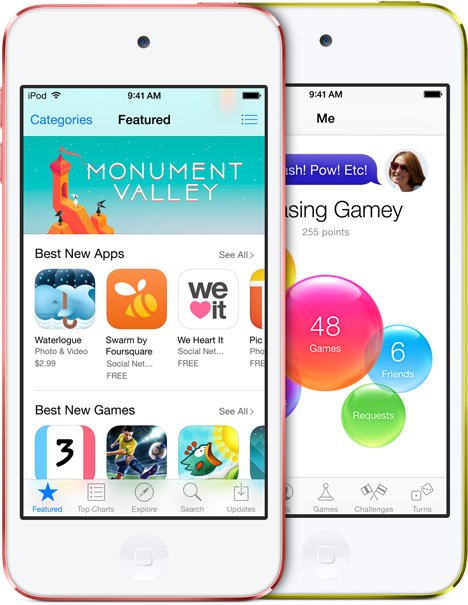
Buying an iPod Touch is basically like buying a phone-less iPhone 4S, specs-wise. It’s a great option for kids who aren’t ready for a full-fledged cell phone (and the monthly bill it entails), but who want access to apps and a decent camera and fun stuff like that. Best of all, you don’t need a computer to load content onto it; just a Wi-Fi network.
Product Page [Apple.com]
Apple TV ($99)
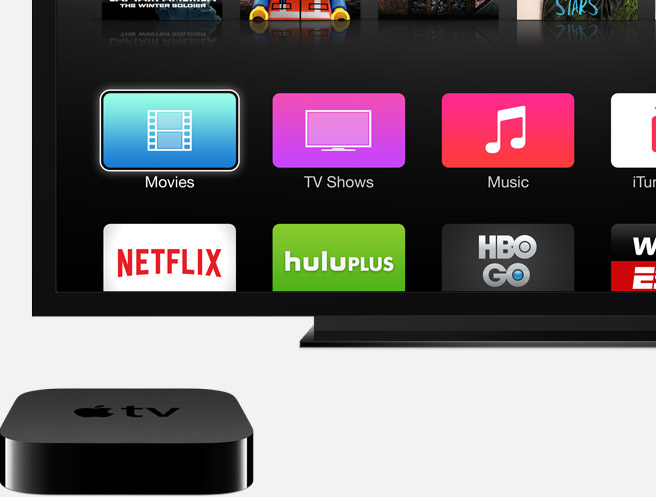
Hooking an Apple TV box up to your TV serves two main purposes. One: You can use it to stream music and video from popular services like Netflix and other providers. Second: You can use its AirPlay feature to sling content from your iPhone, iPad, MacBook and other Apple gadgets, expanding it for viewing on the biggest screen in your house. Your TV is the biggest screen in your house, right? Right?!
Product Page [Apple.com]
More Must-Reads from TIME
- Why Trump’s Message Worked on Latino Men
- What Trump’s Win Could Mean for Housing
- The 100 Must-Read Books of 2024
- Sleep Doctors Share the 1 Tip That’s Changed Their Lives
- Column: Let’s Bring Back Romance
- What It’s Like to Have Long COVID As a Kid
- FX’s Say Nothing Is the Must-Watch Political Thriller of 2024
- Merle Bombardieri Is Helping People Make the Baby Decision
Contact us at letters@time.com